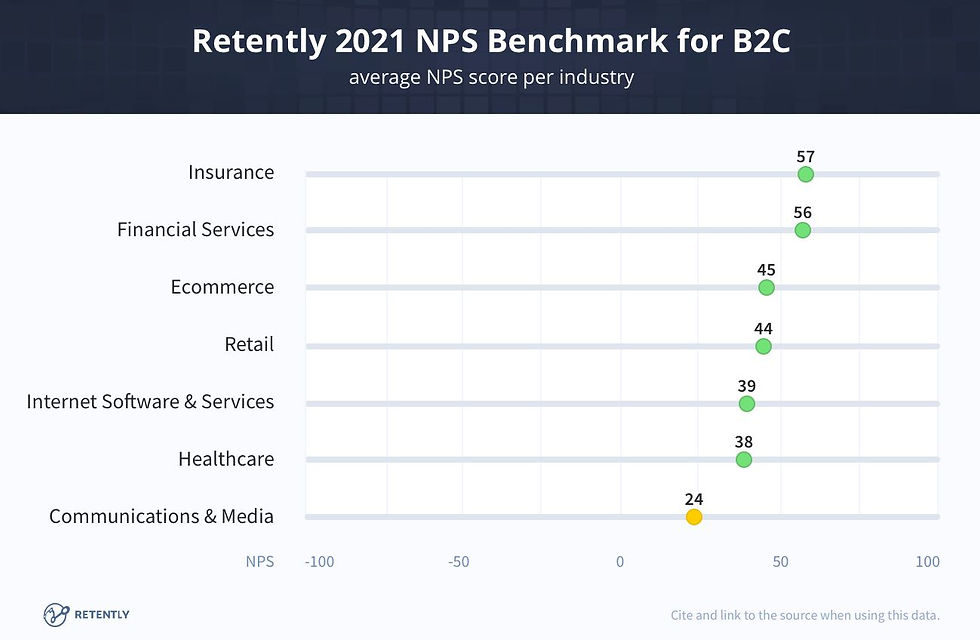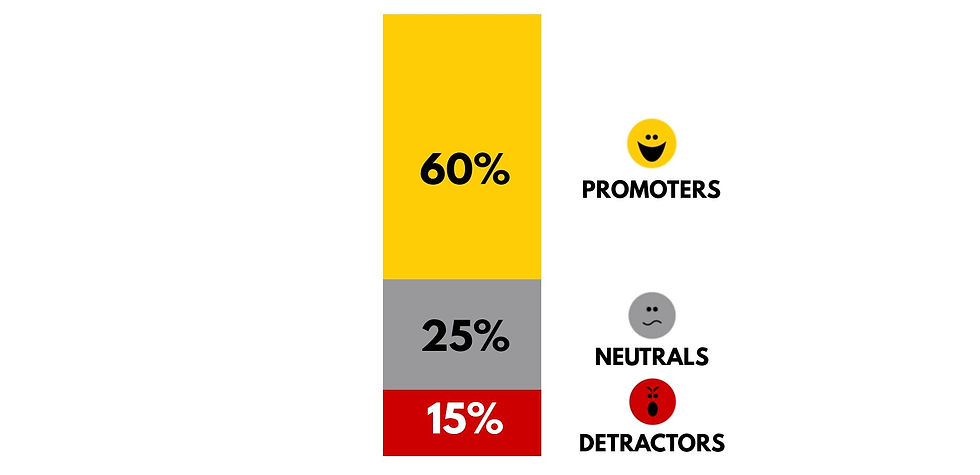What is NPS (Net Promoter Score) and how to calculate
- Canal Sonho Grande

- Oct 17, 2021
- 3 min read
Updated: Nov 28, 2022
What is NPS (Net Promoter Score)?
NPS means Net Promoter Score and aims to measure and help increase customer loyalty. When a company is small, it is simple for us to understand the satisfaction and dissatisfaction of customers with the product or service provided. However, as the company grows, as a result of the increase in customers, it becomes increasingly complex and difficult to understand what each customer thinks.
For this reason, in 2003, after years of research, the consulting firm Bain & Company developed the Net Promoter Score (NPS), a practical way to understand and communicate how loyal your customers are to your product or service. The consultancy came to the conclusion that the best question to obtain this type of information from clients is:
How likely are you to recommend this product or service to a friend or colleague?
To answer this question, customers should tick an answer from 0 to 10, the higher the score, the more likely the recommendation. According to the answer, each person is classified as Promoter, Neutral or Detractor.

What is a good NPS?
Mathematically the NPS can vary between -100 and +100. -100 if 100% of clients are detractors and +100 when 100% of clients are promoters. However, it is difficult to define a point that NPS is considered good or bad, as this depends directly on the industry we are analyzing. According to a survey conducted by Retently, the average NPS by industry for B2B and B2C companies are:
As we can see, for B2B companies, the Logistics and Transport industry has an average NPS of 3, which is much lower than other segments, such as Consulting, which has an average NPS equivalent to 62.

For B2C companies, there is a significant difference, but a little less than what we see for B2B companies. Media and Communications is the industry with the lowest average NPS, while the Insurance segment has the highest, with 57.
If you want more details on how to make an NPS assessment with other companies and industries, check out this post produced by Retently.
How to calculate NPS (Net Promoter Score)?
After asking the question with your customers, as a first step to calculate the NPS, it is necessary to quantify the proportion of customers for each of the three groups. In the example below, 60% of the customers who answered the survey were classified as Promoters, 25% Neutral and 15% Detractors.

To calculate the NPS, just make the difference between the Proportion of Promoters and Detractors, so:
NPS = % Promoters - % Detractors
NPS = 60% - 15% = 45%
This metric is also used to compare different companies, as it is generally directly related to the growth rates of organizations. The higher the NPS value the greater the company's growth is.
In addition to calculating the NPS, we also need to understand the reasons for each person's grade, so that we can define actions that will really improve customer satisfaction and, consequently, generate better results.
So it's always important to ask "Why?" after the score given, it is always better to allow open-ended responses to be clearer about what customers think and to avoid biased responses.
To better understand the impact that the use of the Net Promoter Score (NPS) can have on the growth and maintenance of your company's success, we recommend reading the book "The Ultimate Question 2.0.
In order to develop better products and services that increase customer loyalty, it is essential that the company's employees are motivated. The NPS methodology, in addition to being applied to customers, is also used to help increase the engagement of the company's employees, known as the Employee Net Promoter Score. To learn more about this, read Bain & Company's article "Net Promoter for People: Give Employees a Voice, Get Their Best" .




